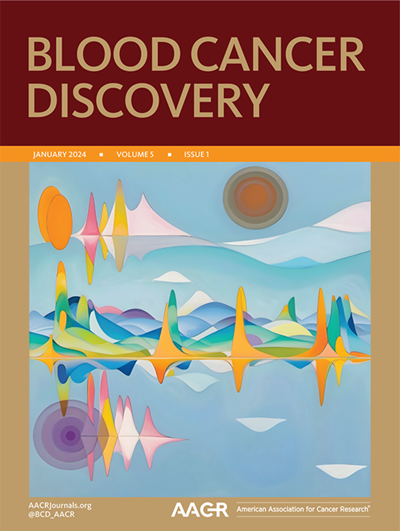iPSC 白血病模型进入成熟期
IF 11.5
Q1 HEMATOLOGY
引用次数: 0
摘要
摘要:在本期《血癌发现》(Blood Cancer Discovery)杂志上,Kotini及其同事介绍了一种将原发性人类急性髓性白血病(AML)大规模重编程为诱导多能干细胞(iPSC)的策略。他们的研究表明,AML iPSC 的造血分化产生的可移植白血病与原始患者的急性髓性白血病具有显著的分子相似性,这为研究这种疾病提供了新的模型和见解。见 Kotini 等人的相关文章,第 318 页(7)。本文章由计算机程序翻译,如有差异,请以英文原文为准。
iPSC Models of Leukemia Come of Age.
Summary: In this issue of Blood Cancer Discovery, Kotini and colleagues present a strategy for large-scale reprogramming of primary human acute myeloid leukemias (AML) to induced pluripotent stem cell (iPSC). They show that the hematopoietic differentiation of AML iPSCs gives rise to transplantable leukemias with remarkable molecular similarity to the original patients' AML, providing new models and insights into the disease. See related article by Kotini et al., p. 318 (7) .
求助全文
通过发布文献求助,成功后即可免费获取论文全文。
去求助
来源期刊

Blood Cancer Discovery
Multiple-
CiteScore
12.70
自引率
1.80%
发文量
139
期刊介绍:
The journal Blood Cancer Discovery publishes high-quality Research Articles and Briefs that focus on major advances in basic, translational, and clinical research of leukemia, lymphoma, myeloma, and associated diseases. The topics covered include molecular and cellular features of pathogenesis, therapy response and relapse, transcriptional circuits, stem cells, differentiation, microenvironment, metabolism, immunity, mutagenesis, and clonal evolution. These subjects are investigated in both animal disease models and high-dimensional clinical data landscapes.
The journal also welcomes submissions on new pharmacological, biological, and living cell therapies, as well as new diagnostic tools. They are interested in prognostic, diagnostic, and pharmacodynamic biomarkers, and computational and machine learning approaches to personalized medicine. The scope of submissions ranges from preclinical proof of concept to clinical trials and real-world evidence.
Blood Cancer Discovery serves as a forum for diverse ideas that shape future research directions in hematooncology. In addition to Research Articles and Briefs, the journal also publishes Reviews, Perspectives, and Commentaries on topics of broad interest in the field.
 求助内容:
求助内容: 应助结果提醒方式:
应助结果提醒方式:


